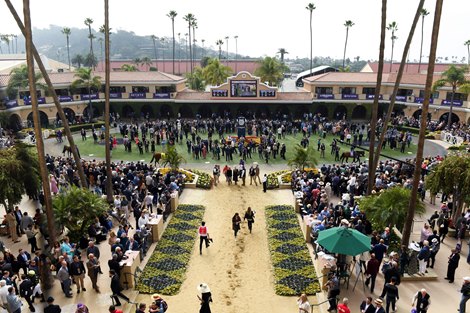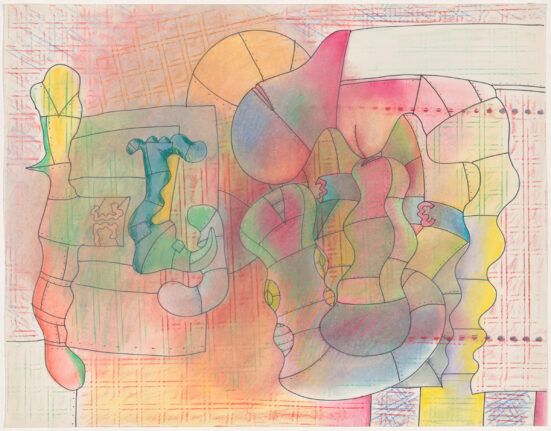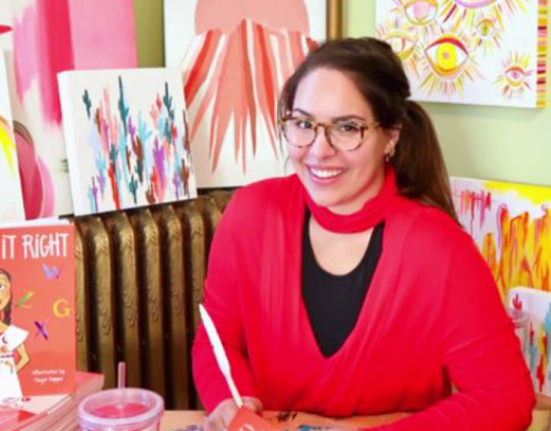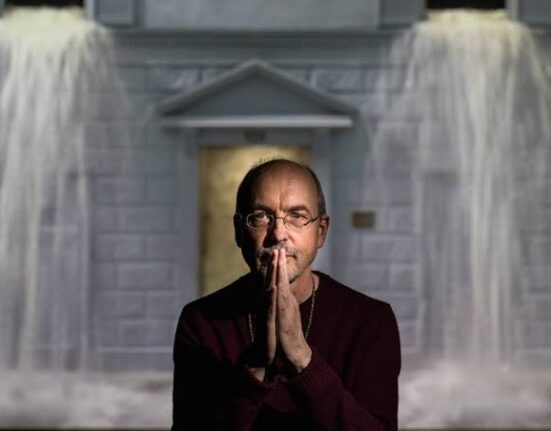If people only knew. Most racetracks that lie dormant for months ramp up easily for live meets with a routine regimen of paint, polish, and a whole lot of sweeping up. If their patrons are lucky, there may have been a few physical improvements to the grandstand, but at least their favorite seat has been power washed and the gum spots removed from the floorspace. Otherwise, let the games begin.
Del Mar is faced with a whole ‘nother challenge before there can be a Thoroughbred summer meet. Each year, from early June through the Fourth of July weekend, the San Diego County Fair takes control of the property—owned by the State of California—that is otherwise occupied by the racetrack grandstand and vast stable area. And by control, I mean every possible corner of the grounds is given over to some aspect of the fair.
The main parking lot becomes the midway, wall-to-wall with carnival rides guaranteed to bring up your freshly eaten lamb gyro, along with games of skill and chance, at which large sums of money can be spent in pursuit of “winning” animal-shaped toys plush with carcinogenic stuffing.
The towering multi-purpose buildings to the east of the grandstand house the livestock pens—Noah’s Ark on steroids—in which unsuspecting pigs, sheep, and prize poultry are displayed, sold, then presumably taken away as pets. Sheep smell better than pigs, but the reader probably already knew that. I once went to a cat show headquartered in what is also Doug O’Neill’s barn, where Nyquist lived one summer. I was eyed by suspicious Persians and Siamese and came away sneezing for a week.
The main drag leading into the grounds—better known for its platoon of valet parking attendants during the meet—is lined during the fair by food stands, if by food you are willing to include deep-fried Oreos and bacon-wrapped pickles. A 30-foot cob of corn towers over the lane. Tanker trucks arrive early each morning loaded with beer batter, disgorge their cargo, and then move on. You can buy anything on a stick. Anything.
During the fair, the grandstand itself is surrendered to what is loosely referred to as arts and crafts. Art, being in the eye of the beholder, means a whole lot of Pacific Ocean seascapes, cliffscapes, and birdscapes, as well as an inventory of portraits that could frighten Goya. Crafts range from blown glass (and who doesn’t like that?) to bits of macaroni glued to colored pasteboard. Everybody gets a ribbon.
During the fair, the dirt oval is packed hard and protected as much as possible, although the concert stage is erected on the main track near the finish line, for maximum seating capacity. The turf course, fortunately, is sacrosanct. Elevated crosswalks keep fairgoers from trampling the sod on their way to infield pleasures. Years ago, when the course was expanded for Del Mar’s first Breeders’ Cup, trays of turf were installed crossways at two key points that could be removed to accommodate vehicles needed to service infield facilities during the fair. Once the fair is a wrap, the trays are replaced, with the seems carefully matched and overseeded.
“I have to admit I was a little leery about that when they were first put in place,” said Tom Robbins, Del Mar’s executive vice president of racing and industry relations. “But you really can’t tell the difference. And it has solved putting any heavy vehicles on the grass, which was a problem in the past.”
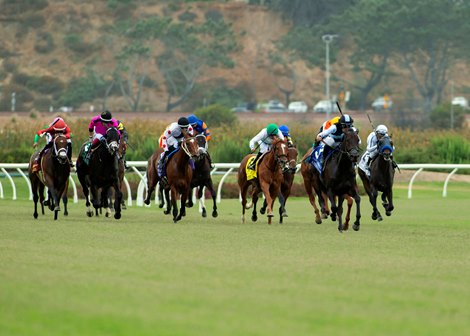
Turf racing at Del Mar
During the fair, the stable area turns into a carny campground. The itinerant folks who work the fair circuit live in campers and trailers parked where Flightline and American Pharoah lived their pampered lives during race meets. The detritus left behind is sometimes ghastly to behold, but it must be dealt with quickly.
The attendance for the 20 days of the 2024 San Diego County Fair was reported to be 877,452. That’s a lot of stress on infrastructure in a short period of time. Operatives of the Del Mar Thoroughbred Club must basically sit on their hands during the fair, reasonably safe from the sideshows, and wait it out.
This year, the final day of the fair was July 7. Opening day for the races is July 20. The backstretch opens for horses July 14, and main track training is scheduled to commence July 17. For those doing the math, that gives the racetrack crew hardly enough time to charge up the leaf blowers.
“You have to see it to believe it, how this place is turned around in the 10 days we have,” said Ann Hall, senior vice president, operations and administration. “It only happens because we have so many amazing people who have worked here for so long, and they know every little thing that needs to be done.”
They call it The Turnaround, and each year it is choreographed as meticulously as the D-Day invasion. Once the vendors have cleared out their stands and rides—most of them heading up the road to the Orange County Fair—the San Diego County Fair does its share of clean-up before the Del Mar Thoroughbred Club crews are unleashed to plant flowers, refurbish the track, and turn the exhibit halls into stables.
“Of course, we’re champing at the bit, ready to go, while the fair people are exhausted after their long days,” Hall said. “The areas for the horses and staff come first. Even though the fair doesn’t really have any horses on the backstretch, we disinfect the stalls and tamp down the dirt floors to make them level. We have to move a lot of dirt onto the concrete floors of the exhibition halls before the carpenters get to the stall set-up.”
With a lot of heavy lifting by a regiment of craftsmen, some 300 temporary stalls will be finished by Saturday night, before the vans start rolling through the backstretch gates. At capacity, the entire backstretch will have about 1,800 horses this summer.
“Then the last thing we do is power wash the areas for patrons,” Hall added. “It will all get done and it will be great for next Saturday. And if it’s not 100% done, only we will know what few things are left, and they’ll be done by Sunday.”

